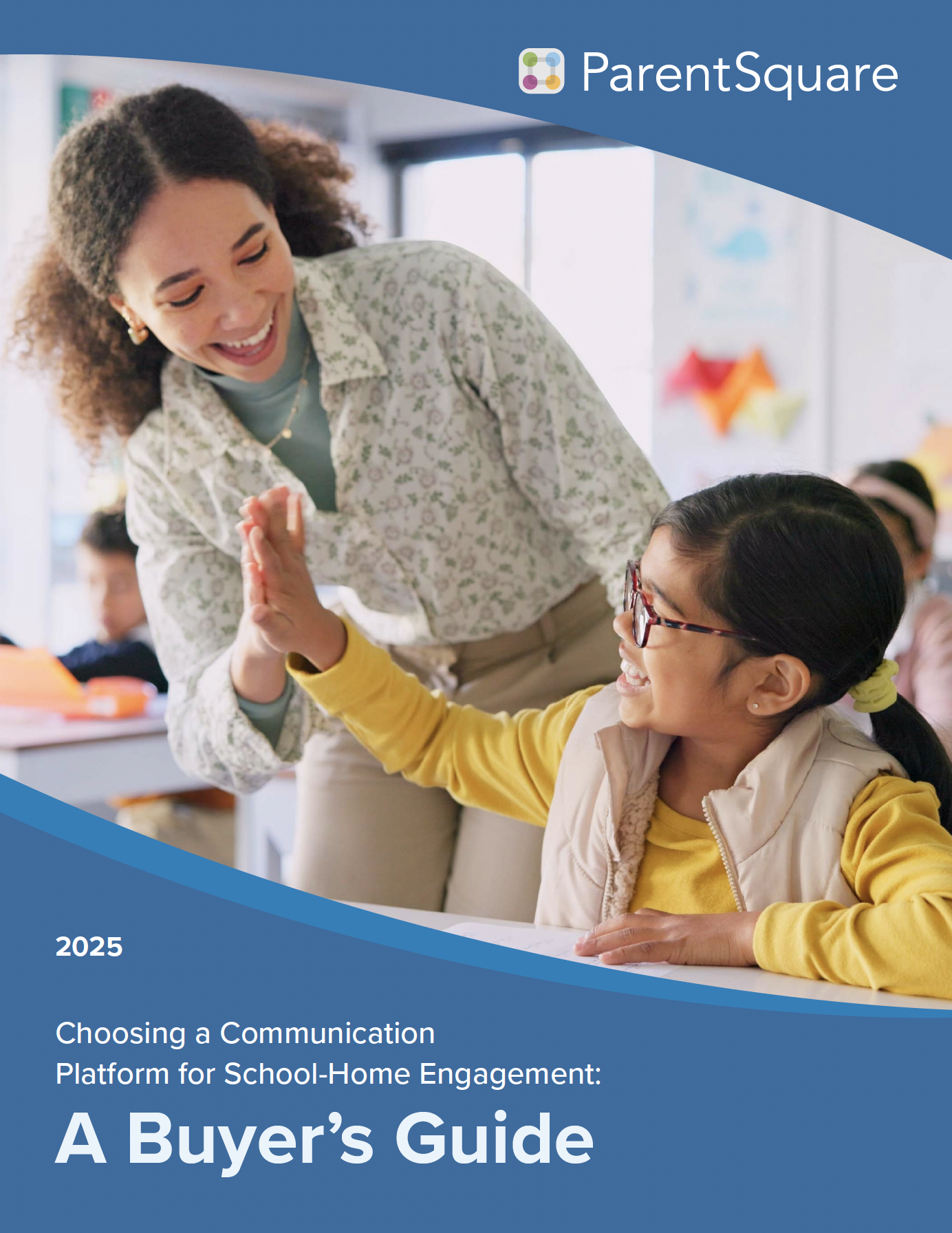
This past school year was a learning curve for many — educators and parents especially. It’s critical to take what we’ve learned and apply it to back-to-school, as we prepare for possible remote, hybrid or face-to-face learning scenarios.
More than ever before, parents and families play a tremendous role in student success. Schools and districts now depend on parents to help shape the home learning environment, organize access to technology, and support their children’s learning, schedules, assignments and social-emotional growth.
How can you maximize parent support when school starts in the Fall?
The specifics may look different depending on your community and situation, but no matter what, you need to engage parents and make it easier for them to take on their more involved roles. Here are seven suggested actions.
- Make sure your organization treats parents as partners at every level
- Reduce time-consuming paperwork and administrative tasks
- Make sure you can reach parents where they already are
- Consolidate tools, platforms and apps as much as possible
- Clarify parents’ roles for remote or hybrid learning
- Train parents, staff and teachers before school starts
- Prepare to support families as things change

In a recent webinar, Engaging Families When Schools Reopen, family engagement expert Steve Constantino noted that schools usually focus on two areas for parents: inform and comply. While this isn’t inherently wrong, treating parents as “information receptacles” and “compliance officers” discourages the kinds of collaboration we need for today’s learning scenarios.
It’s more important than ever to view parents as partners and active participants in student learning:
“Remember our families are co-teachers, not our teaching assistants. They are now in the driver’s seat. And so let’s support them… We can’t make them teachers because you have expertise that they don’t have, but it’s your expertise that can help families feel more confident and more comfortable about helping their children.”
Steve Constantino, min 33:46, Engaging Families When Schools Reopen, May 21, 2020 webinar
Establish What Partnering Looks Like
It’s important for district and school leaders to come from a position of partnering in everything they say and everything they do, so everyone across the organization moves in this direction!
- Steve Constantino’s Seven Big Ideas [for family engagement]: Pandemic Edition is a great resource to help you establish what partnering with parents means for your organization.
- For a great before and after example showcasing how a simple email can connect with parents and encourage partnering with the school, go to minute 38 of Engaging Families When Schools Reopen.
- Needham Public Schools created a page on their website outlining parent and teacher roles to help navigate the changes brought by distance learning.
Get Parent Input on Back-to-School Plans
Ask your school community for their thoughts to get a better understanding of the needs and challenges raised by remote learning so far. With key stakeholder feedback on possible back-to-school scenarios, you can develop a solution that works best for families and will get the most support.
Allow Parents to Easily Respond and Engage
Ensure your school welcomes parent questions, suggestions and dialogue. Is it easy and straightforward for parents to respond to a school, classroom or group message? Can they leave a comment? Can they post a question and get a reply?
If not, how else might they send in feedback — and how difficult is it for them to send a direct or group message to the right person?
Create Opportunities to Connect and Build Trust
With face-to-face parent events on hold, can you create virtual parent-teacher conferences, back-to-school nights, orientations — or something new — to create genuine connections and build partnerships with parents? With fewer opportunities to truly connect face to face, virtual options are a great way to bring teachers, staff, and parents together. Throughout quarantine, people have done a wonderful job fostering connections online — so why not do the same for your school?
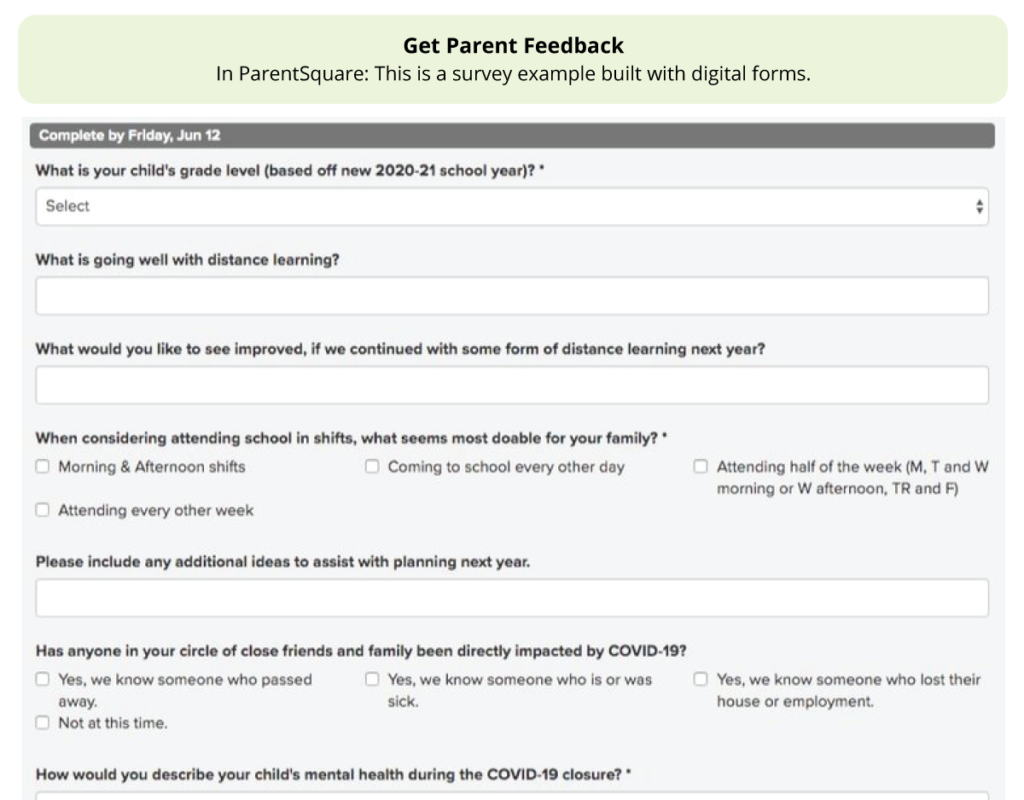

Now that parents are taking on a more involved role in their children’s education, how can you streamline the necessary parent administrative tasks required throughout the year? Annual enrollment, address verification, media releases, IEPs, permission slips, and now COVID-19 health checks, take quite a bit of time and energy that could better be used to support remote learning.
Go Digital to Save Parents (and Staff) Time
Instead of expecting your parents to fill out paper forms — entering in contact details that schools already have, one more time on one more form — move to digital forms, using a tool that doesn’t ask for information you already have, but pre-populates it.
Support digital signatures to remove the need for parents to spend time scanning and emailing documents, or having to drop off physical copies at the school.
Even student-specific documents such as grade or status reports can be handled electronically to reduce both cost and your carbon footprint, all while getting information to parents and students faster and more securely.
Streamline COVID-19 Health Screenings
Every district and school is ramping up their COVID-19 prevention efforts for the Fall, which will include recurring health screenings and checks. Do you have simple, accessible forms and processes established yet for online health screenings and/or reporting COVID-19 exposure? Are you ready to communicate to parents, students and staff important information such as symptoms to look for, when to stay home, and how to communicate absences to the school?
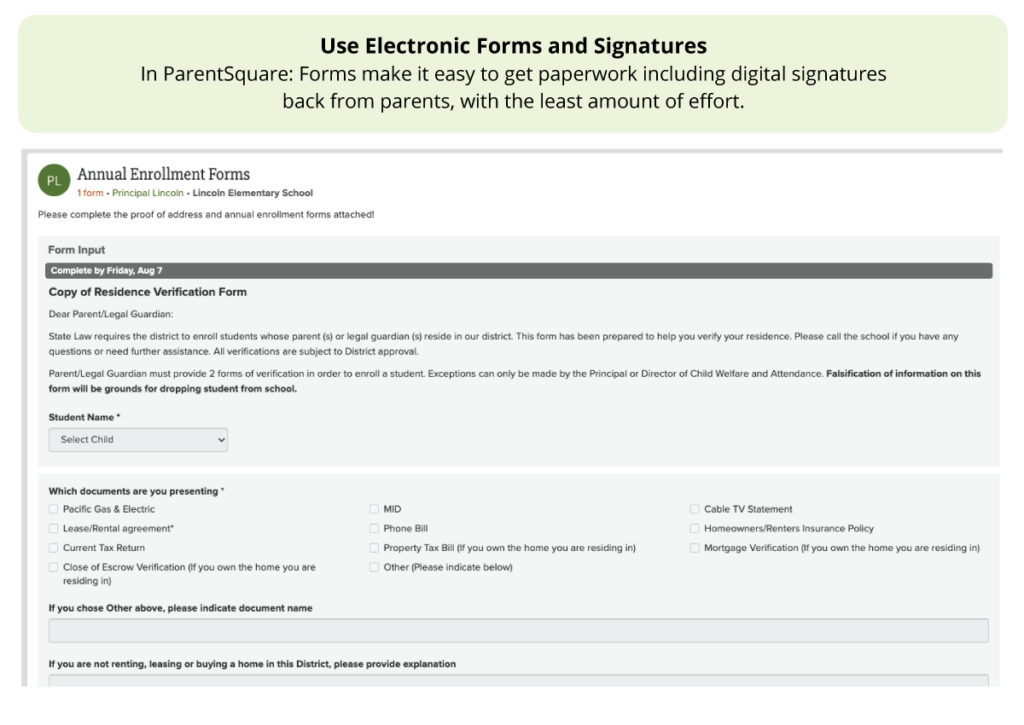

Use Their Preferred Language
When communicating with parents whose first language is not English, are you sending notices and messages in their preferred language? Do direct messages get translated automatically, if the parent’s language preference is different to that of the teacher? Using parent’s preferred language helps reduce any barriers to communication they might face when messaging in English.
Use Their Preferred Channels
It’s also a great idea to look into multi-modality delivery: can you reach them via email, text, phone call and/or app, depending on their preferences and technology use? Can you set up one message for parents in the district/school/class and have it arrive in the channel they prefer and regularly use?
Let Parents Personalize Notifications
The increased need for communication brought on by remote learning also makes personalization of notifications incredibly important. Check if your platforms allow parents to fine-tune communication notifications by level of importance, channel, and frequency.
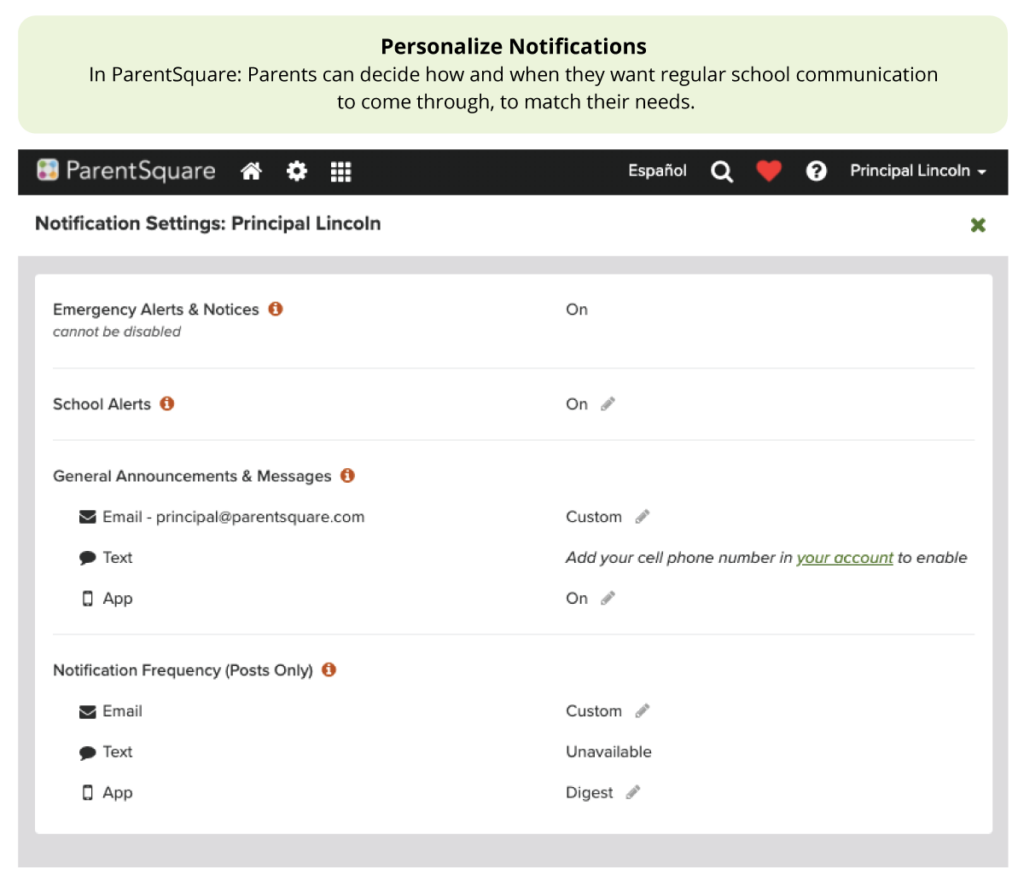

Whatever platform(s) you use, it’s more important than ever to make sure parents aren’t having to work hard just to handle school communications and interactions. We all know many parents have full-time jobs — some might even work at the school! — and all parents have to juggle competing responsibilities and pressures. It’s worth assessing how much time and energy basic interactions and communications are going to require.
Streamline Platforms, Logins, and Interfaces
Have you ever counted the number of tools, logins and interfaces you expect parents to be familiar with and master? Here’s a typical list: SIS, LMS, emergency messaging, school newsletters, classroom communications apps, Google Drive, extracurricular or sports messaging, Clever for SSO, bus routing apps, lunch balances, health checks, donations and payments, surveys, volunteer sign ups, permission slips, etc.
Having so many tools is exhausting for parents, especially for those who aren’t tech-savvy. Most likely they are trying to figure out different user interfaces, struggling to keep up with multiple message streams, asking for help when they forget where to go, and sometimes staying silent because it’s just too complicated and time-consuming to respond.
Provide an easy place for parents (and students) to go to access all important information, so they don’t have to search through different apps and noisy email inboxes to find what they need.
Valerie from ParentSquare can help you tally up the number of tools you have for parents:

Teacher-parent communications need to support and align with what’s already happening between teachers and students. Obviously, this looks different depending on a student’s age: the older students get, the more responsibility they take for their own learning, shifting the role parents play.
Establish Consistency Across Schools and Classrooms
Establish norms when it comes to communication between schools, teachers and parents. Imagine being a parent of two or more students at different schools, trying to manage communication from multiple teachers, staff, and specialists! Setting up norms can help everyone know what to expect and provide better support for students.
- Class updates: sent through the school-home communications platform as needed.
- Weekly assignments: posted Fridays by 5pm to give families maximum flexibility.
- Assignment questions: high school students use the LMS or StudentSquare, not email.
- School-wide updates: the weekly principal’s update highlights key activities and info.
- Teacher availability: for messages sent after 4:00pm, expect a reply next school day.
Involve Elementary School Parents in the Learning Process
Parents of younger elementary students will mostly likely handle all classroom communications and help students access schoolwork and manage their daily schedule. Students at this age need support for the little things, too — like logging into Zoom and turning in assignments.
While the teacher may be relaying instructions to students during remote classroom time, parent-teacher communications is absolutely critical if learning is to happen outside of those times.
Loop in Parents of Middle and High School Students
Though students are expected to manage more of their own learning after elementary school, parents are still needed. Teachers can partner with parents to provide reinforcement and encouragement, and help students take on more responsibility. Teachers also might want to loop parents in as an escalation point on an issue — ideally in a way that’s easy and straightforward for everyone.
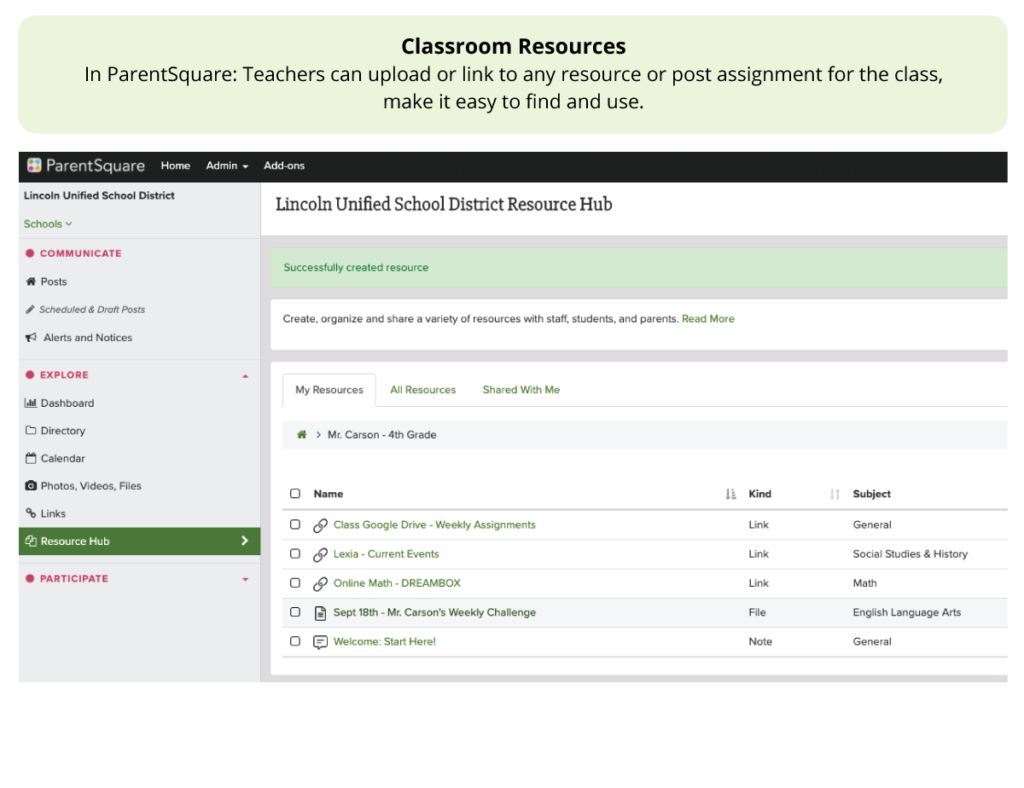

Train Your Parents
It may seem obvious, but parents need to develop confidence using whatever tools and platforms you have for them! If parents have no familiarity with the tools, they won’t be comfortable even trying them. Parents also need to understand what you expect from them and their student during this very different school year.
To maximize your chances of creating partnerships and collaborative relationships between staff, teachers and parents, set everyone up for success by helping them learn how to use key platforms and tools and understand what students and parents can do on a daily basis, weekly basis, etc.
Provide training and Q&A sessions during back-to-school preparation. Give parents a quick tour of available resources, and reinforce the importance of getting comfortable with key tools at your back-to-school kick-off events. Link to self-serve resources that can be accessed on demand as needed.
Train Teachers and Staff on How to Connect With Parents
We know you’re training teachers and staff all the time! To help maximize parent support for K12 back-to-school, just make sure that you include training on:
- consistent processes and policies you’ve established
- refreshers on key tools and platforms
- what partnering with parents looks like
Help staff and teachers gain confidence and familiarity with any changes, and be ready to go when school starts!
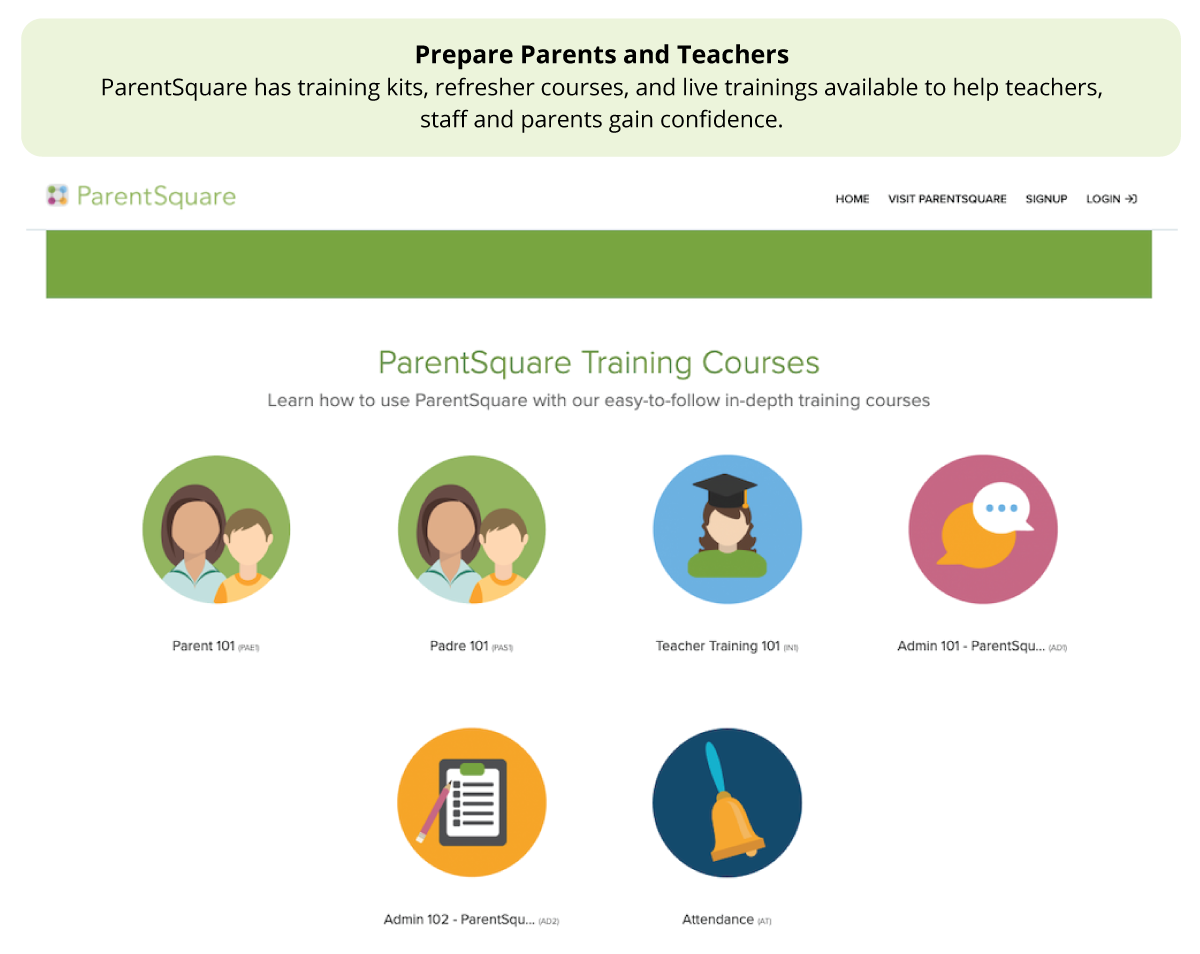

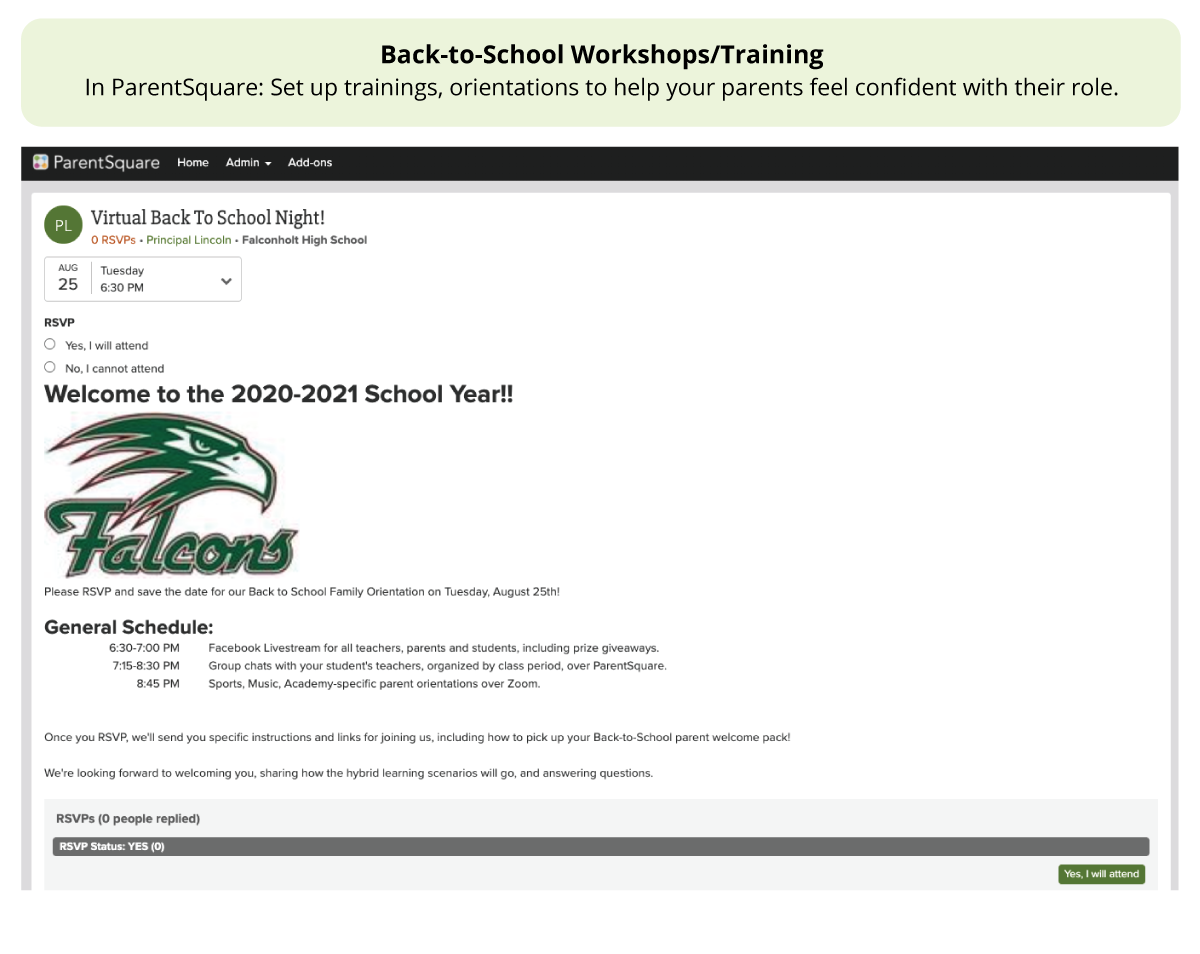

In the Fall, many districts and schools will introduce new models of remote learning, and may begin to open up campus to more people. New scenarios may create new challenges for families.
Support Working Parents, Teachers and Staff
Schools have been working hard to help families with connectivity, devices, and food during school closures. Many of hybrid learning scenarios of staggered schedules and half-day cohorts will bring a host of new challenges for families.
How will you handle students whose parents work full time and cannot physically pick them up — kids who, in normal circumstances, used the bus? What about parents, teachers and staff with students on site for half the school day, who need some sort of child care?
These are all logistics to consider when planning for reopening. Be ready to support families with challenges generated by hybrid or remote learning scenarios.
Make It Clear How to Best Ask for Help
How difficult is it for parents to reach the right person at school to get help? How easy is it to ask a school-related question and get an answer?
The best way to ensure everyone is successful is to make sure they know they can get help, and give them an avenue to do so! Here are some ideas to get you started, including creating a help desk email.
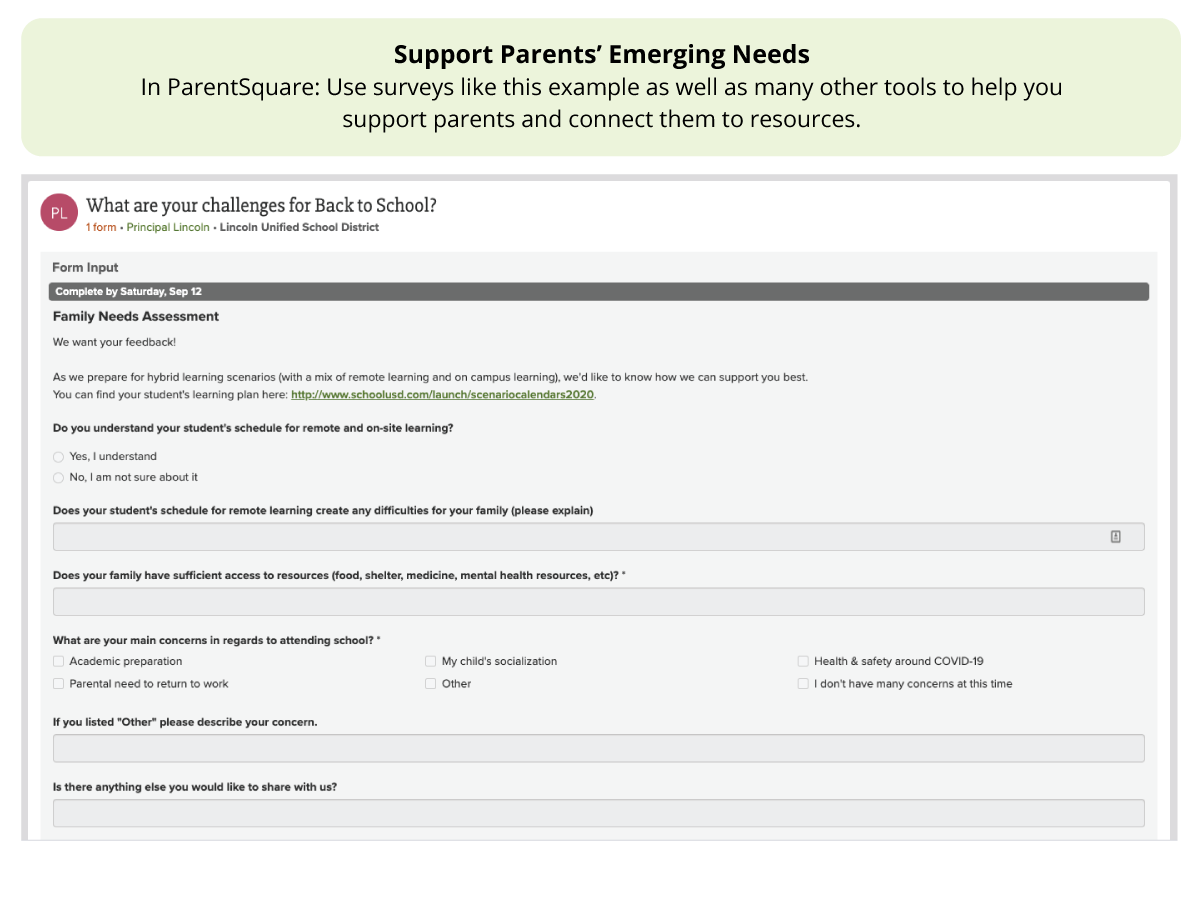

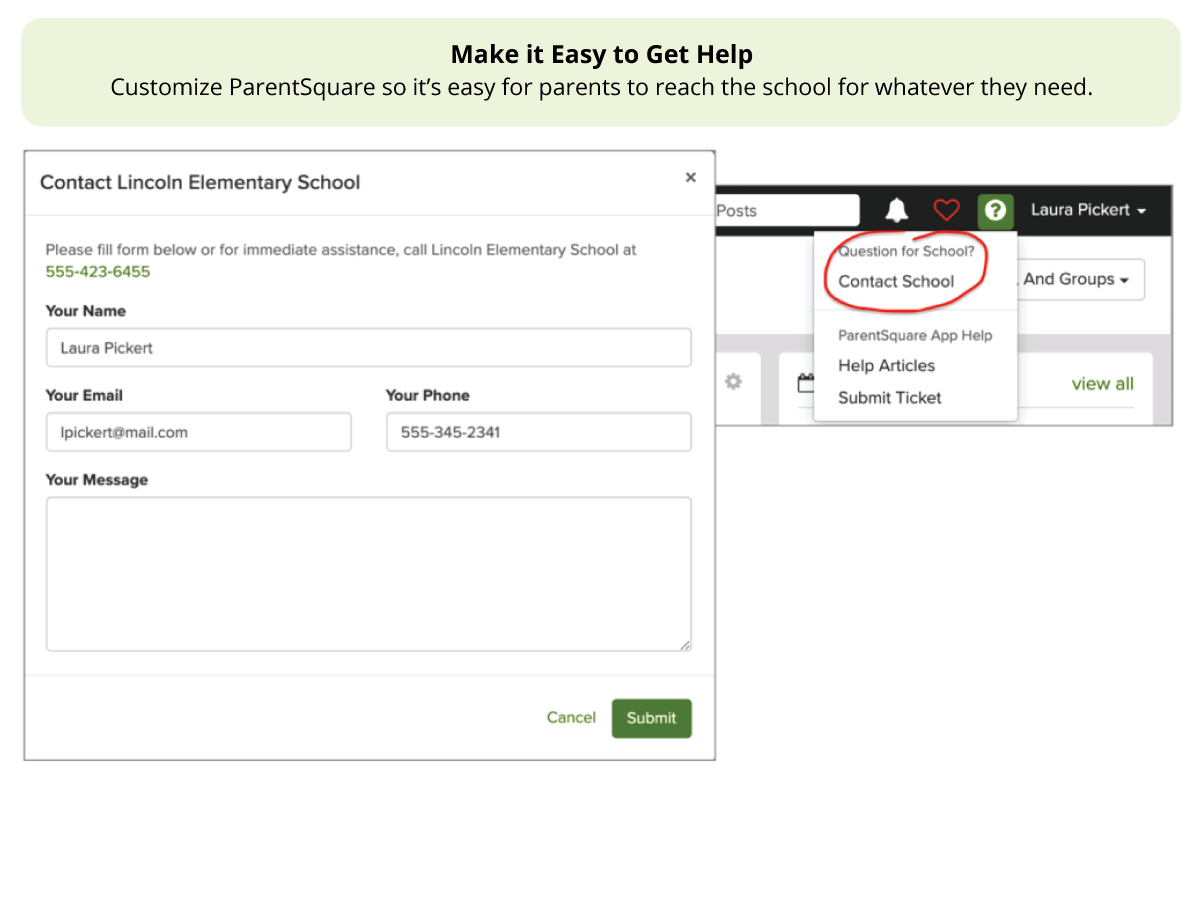

What else do you think we should add to this list?
What are you doing to support parents and set up students for success this Fall?
Please let us know!

